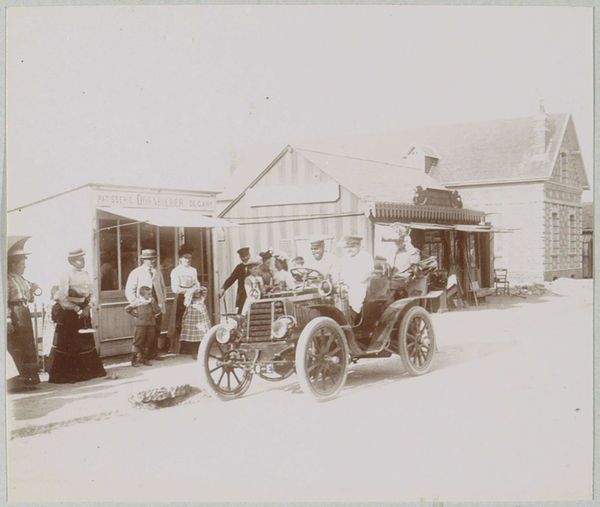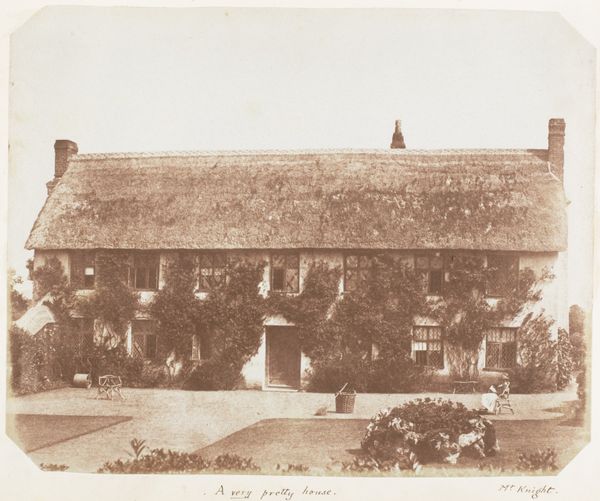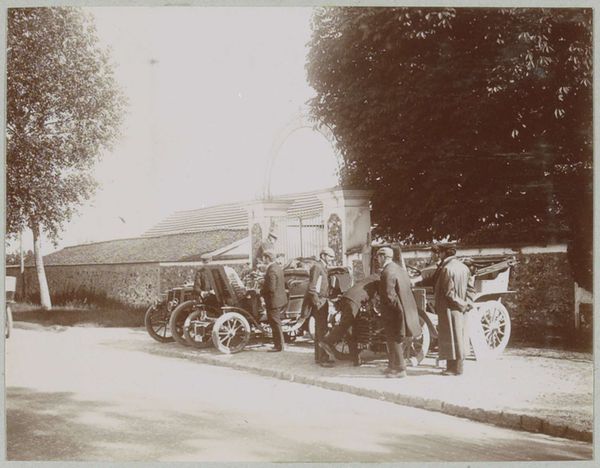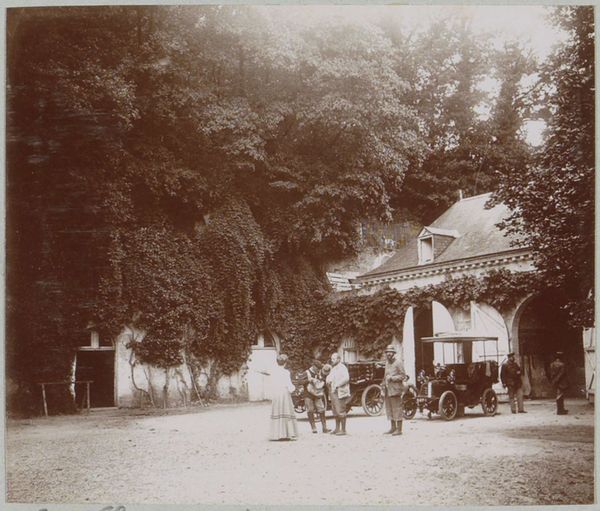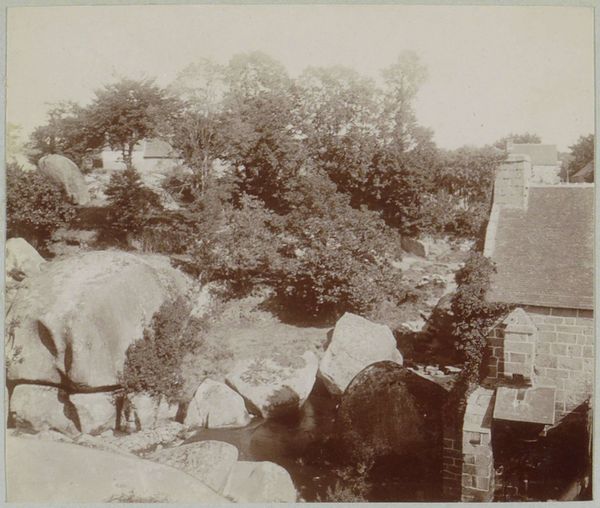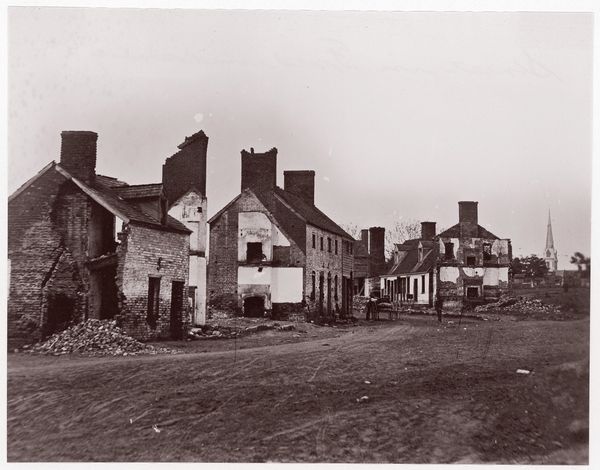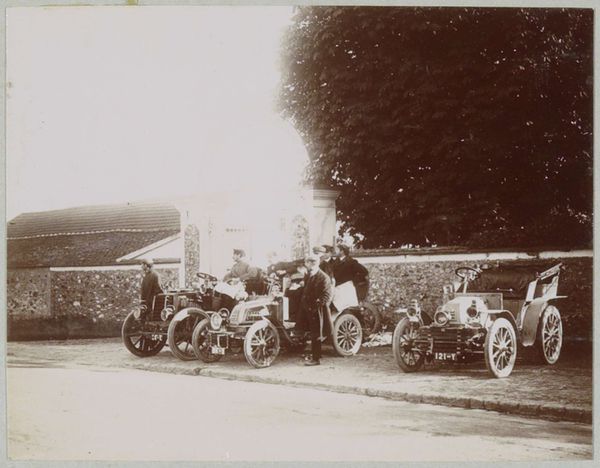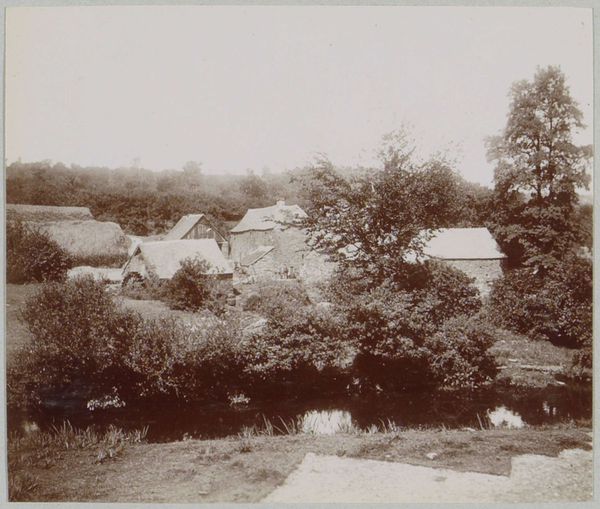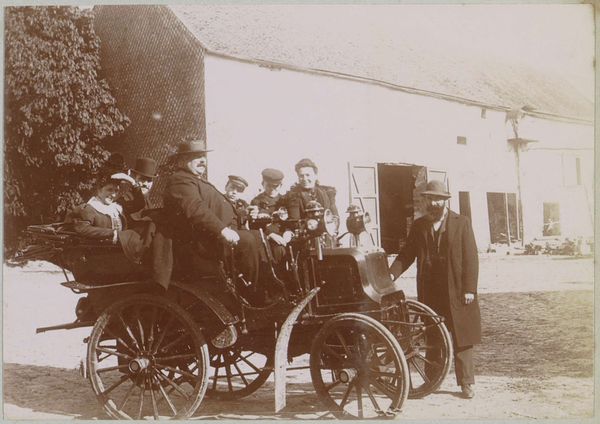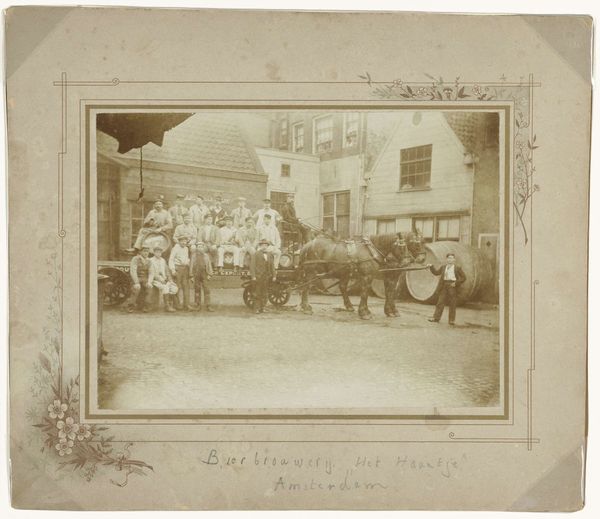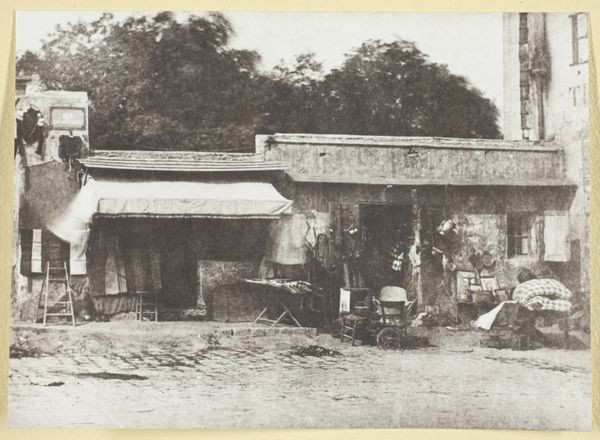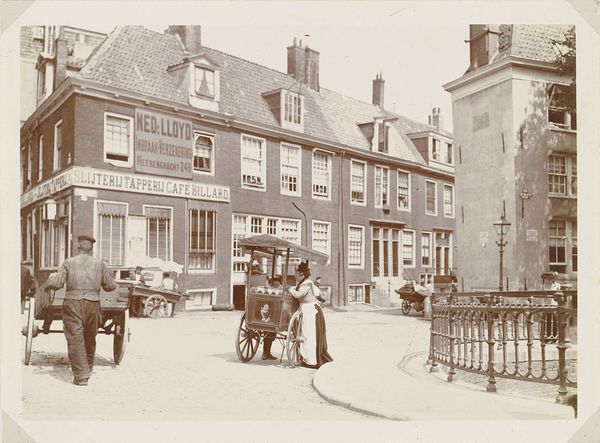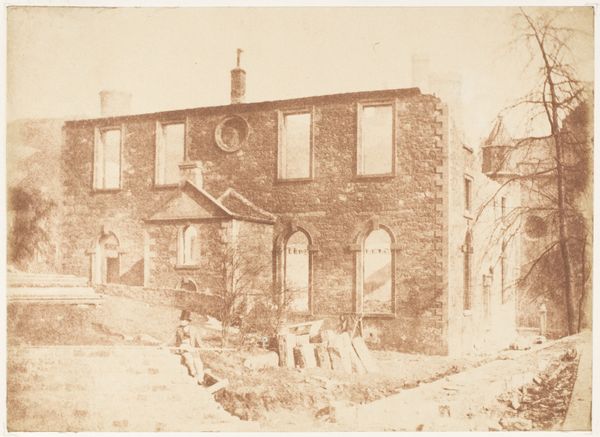
Dimensions: height 66 mm, width 82 mm
Copyright: Rijks Museum: Open Domain
Editor: We're looking at "Gezelschap met paardenkar bij een restaurant in Puy-de-Dôme," a photograph from 1902 held at the Rijksmuseum. I find its muted tones and almost documentary style really intriguing. It feels like a glimpse into a specific moment in time, away from major cities. What stands out to you when you look at it? Curator: It's interesting how this photograph, in its seeming simplicity, touches upon broader themes of rural life and the developing culture of leisure in early 20th-century France. What strikes me is not just the presence of the restaurant, but also the depiction of this ‘company’ with their horse-drawn cart. How does the setting, with its modest restaurant and rural landscape, contribute to the story of social mobility and access to new experiences for a wider segment of the population? Editor: So, the location itself speaks to a changing society? Curator: Precisely. The restaurant isn’t just a place to eat; it’s a signifier of developing tourism and accessible leisure activities, even in a seemingly remote region. Think about who might have frequented such a place. Were they locals, or were they early tourists? And what does the horse-drawn cart suggest about their social standing? It’s through such details that we start to unpack the historical context embedded within the image. Editor: That's fascinating! I hadn't considered the social implications of something as simple as a restaurant in the countryside. I’m seeing how art offers insight into everyday life and societal shifts beyond the grand narratives. Curator: Exactly. This image challenges the idea of art being separate from the mundane and highlights the democratization of leisure—how it became more accessible and visually recorded. Editor: Well, this has definitely changed how I’ll look at photographs going forward. It's made me realize how seemingly straightforward images can tell us so much about the social and cultural context of their time. Curator: Indeed, it is by critically analyzing these everyday scenes that we can develop a deeper understanding of our collective history.
Comments
No comments
Be the first to comment and join the conversation on the ultimate creative platform.
